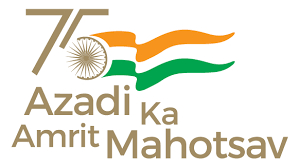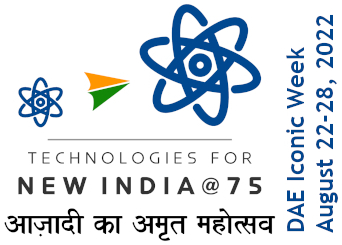Synchrotron Research
Synchrotron sources provide beams of electromagnetic radiation, ranging from Terahertz or sub-millimetre to very hard X-rays, of extremely high brilliance (million times more than the Sun), tuneable polarization and high coherence, which can be used to investigate materials for basic research and industrial application in various subjects ranging from medical applications to nano-technology. SINP is the nodal Institute for developing participation of Indian scientists in the major India-German collaboration project and India-Japan collaboration project both funded by the Department of Science and Technology, India. In addition SINP is also developing an x-ray beamline at Indian synchrotron centre at Indus-II, RRCAT, Indore.
India German collaboration project at DESY, Hamburg, Germany:

Arial picture of the PETRA III Synchrotron ring at Hamburg,
DESY, Germany. |
In presence of the Chancellor of Germany, Dr. Angela Merkel and Hon’ble Prime Minister of India, Dr. Manmohan Singh, the Directors of Saha Institute of Nuclear Physics (SINP), India and Deutsches Elektronen-Synchrotron (DESY), Germany, Professor Milan K. Sanyal and Professor Helmut Dosch, respectively, signed one Agreement in Delhi on 31st May, 2011. This Agreement has enabled the Indian scientist access to the world’s best high-energy synchrotron light source PETRA-III and free electron laser source FLASH at DESY. DESY’s light sources PETRA III and FLASH offer unique research opportunities and a great potential for innovative experiments. Access to the world’s best synchrotron source PETRA-III that can provide beams of the highest brilliance and smallest size will enable the Indian science community to be at the fore-front of basic and applied materials research. PETRA III is a high energy 3rd generation synchrotron source and presently the biggest and most brilliant storage ring light source in the world. SINP, being the nodal institute for this project is actively involved in this collaborative project. Till June 2013, about 35 research groups from various research institutes in India have used the facilities at different beamlines of PETRA III.
India Japan collaboration project at Photon Factory, KEK, Japan:
The Indian beamline at BL-18B beam-port of “Photon Factory (PF)” synchrotron radiation facility (http://www.kek.jp/intra-e/press/2008/PFMoU.html) in Japan has been set up by SINP to cater the need of Indian scientists. The project is sponsored by Department of Science and Technology (DST), Govt. of India with Saha Institute of Nuclear Physics (SINP) being the nodal institute implementing the same. This Indian beamline is conceived as a multipurpose beamline. The Photon Factory, a 2nd generation synchrotron source with 2.5-GeV storage ring and 450 mA beam current, is a dedicated synchrotron radiation (SR) source and can provide highly-brilliant X-ray and VUV light for experiments. Presently, the available facilities are – (a) high resolution powder diffraction in ambient condition, (b) powder diffraction at low temperatures down to 10K, (c) powder diffraction at high temperatures up to 1200 K, (d) Diffraction from single crystals and epitaxial multilayers, (e) x-ray reflectivity and diffuse scattering from solid surfaces and interfaces, (f) x-ray reflectivity, diffuse scattering and grazing incidence diffraction from liquid surface and liquid-liquid interfaces. About 60 research groups from various research institutes in India have used the Indian beamline at PF for their research works.
.jpg) |
 |
|
Arial picture of the high energy particle accelerator at KEK, Japan. Photon Factory is the dedicated x-ray synchrotron source within this facility. |
A picture of the Indian Beamline experimental setup at Photon Factory, KEK, Japan. |
Grazing incidence x-ray scattering beamline at Indus-II, RRCAT, Indore:
SINP is developing a grazing incidence x-ray scattering beamline at the Indian synchrotron Indus-II, RRCAT, Indore. The beamline is under commissioning and will be opened to the general users for experiments shortly. Indus II is a 2nd generation synchrotron source and presently operating at energy of 2.5 GeV and 100 mA electron beam current.

INDUS synchrotron center at RRCAT, Indore. |




